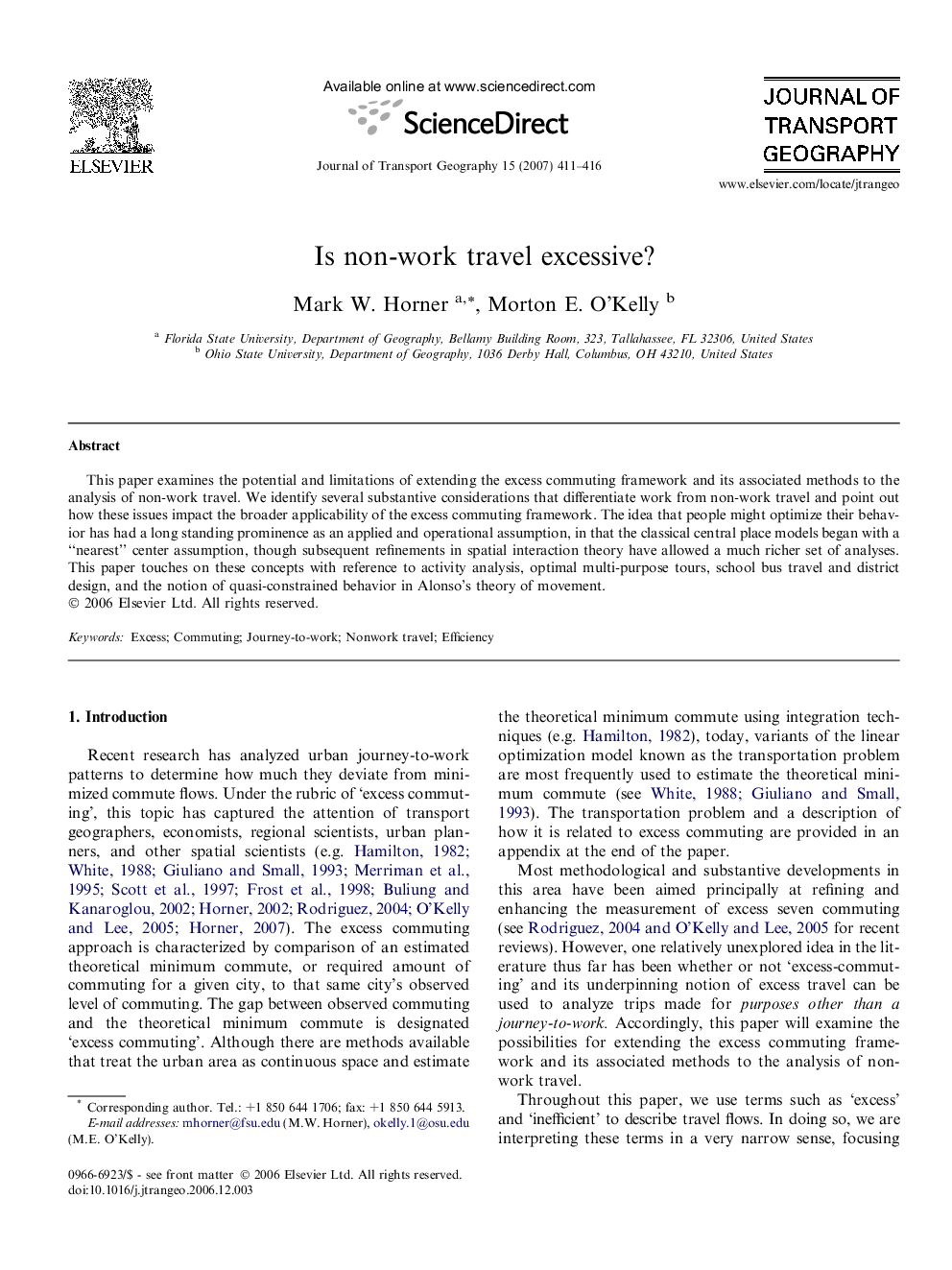| Article ID | Journal | Published Year | Pages | File Type |
|---|---|---|---|---|
| 1060060 | Journal of Transport Geography | 2007 | 6 Pages |
This paper examines the potential and limitations of extending the excess commuting framework and its associated methods to the analysis of non-work travel. We identify several substantive considerations that differentiate work from non-work travel and point out how these issues impact the broader applicability of the excess commuting framework. The idea that people might optimize their behavior has had a long standing prominence as an applied and operational assumption, in that the classical central place models began with a “nearest” center assumption, though subsequent refinements in spatial interaction theory have allowed a much richer set of analyses. This paper touches on these concepts with reference to activity analysis, optimal multi-purpose tours, school bus travel and district design, and the notion of quasi-constrained behavior in Alonso’s theory of movement.
